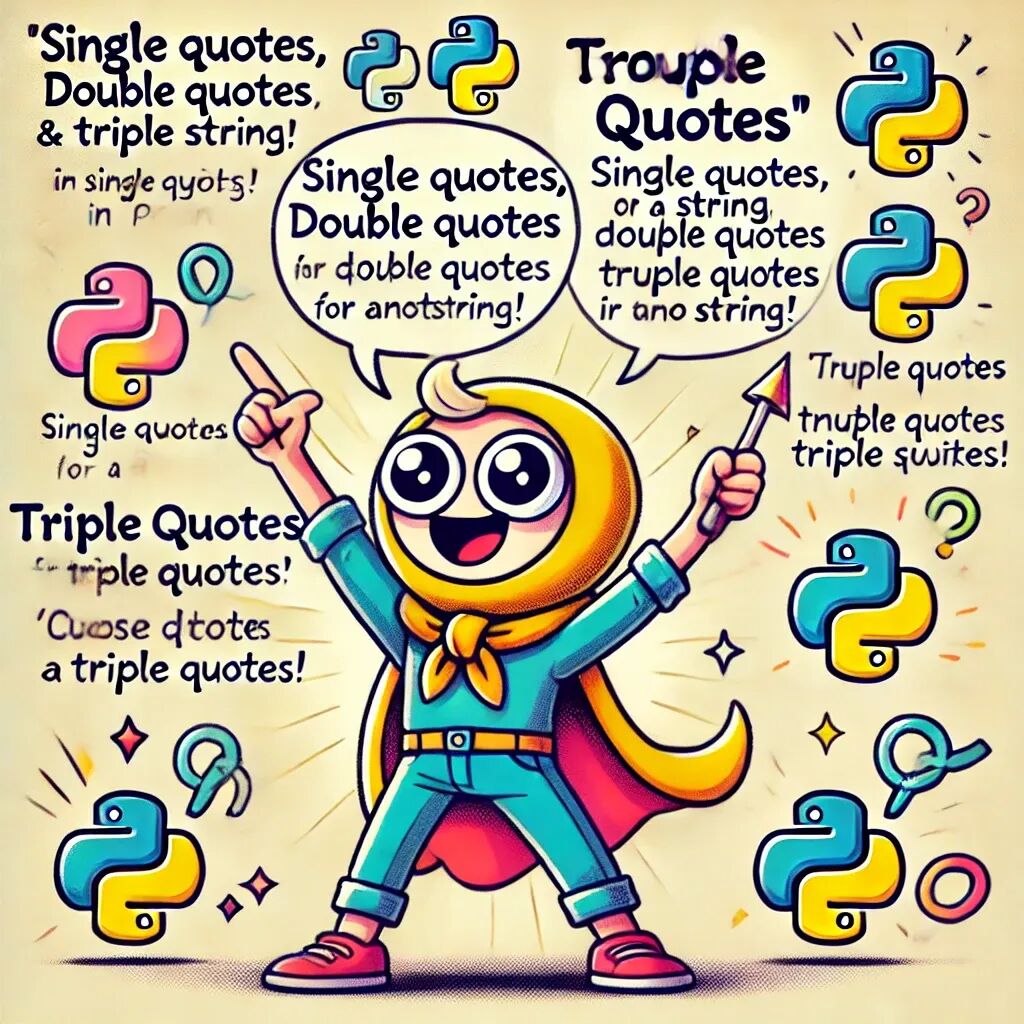
The differences between single quotes, double quotes, and triple quotes in Python:
- 1. Single quotes (‘) and double quotes (” ):
- • Functionally identical:Both are used to define single-line strings and can be used interchangeably.
- • Selection criteria:Primarily based on the type of quotes contained within the string to avoid using escape characters.
- • If the string contains a single quote, enclose it in double quotes.
- • If the string contains double quotes, enclose it in single quotes.
- • Example:
str1 = 'Hello, world!' str2 = "Hello, world!" str3 = "It's a beautiful day" str4 = 'He said, "Hello!"'
- • Used for multi-line strings:Can span multiple lines, making it convenient for writing long texts or strings that include newline characters.
- • No need for escaping:Can include both single and double quotes within the string without escape characters.
- • Commonly used for documentation strings (docstrings):Used to describe modules, functions, or classes, typically placed on the first line of the definition.
- • Example:
str5 = '''This is a multi-line string.''' str6 = """This is another multi-line string." def greet(name): """ This function greets the person passed in as a parameter. """ print(f"Hello, {name}!")
Summary:
- • Single quotes and double quotes:Functionally the same, the choice depends on the type of quotes contained within to avoid escape characters.
- • Triple quotes:Used for multi-line strings and documentation strings, suitable for handling long texts or descriptive content.
Others
-
• For those who need knowledge point materials, I have compiled a summary library of Python knowledge points.
Scan the QR code to follow the public account,and reply “python“
to get all knowledge points for free

-
• Note: All free material access links:https://link3.cc/soragpt
-
The WeChat QR code is as follows
